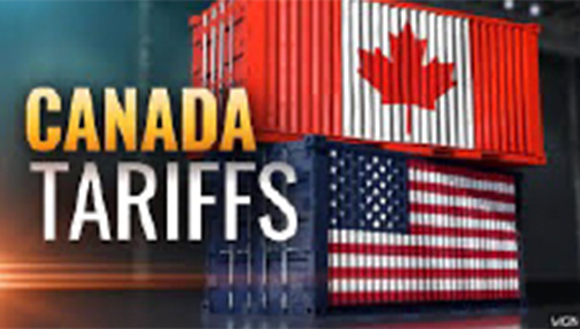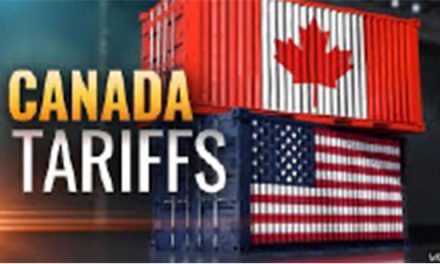Trump Raises Tariffs on Canadian Goods, but CUSMA Offers Relief
As of August 1, 2025, President Trump has increased tariffs on Canadian goods that do not comply with the Canada–United States–Mexico Agreement (CUSMA), raising the rate from 25% to 35%. However, the impact may be less severe than it appears at first glance.
CUSMA Compliance Eases the Blow
CUSMA remains a crucial buffer against these rising tariffs. Currently, an estimated 80–90% of Canadian exports to the U.S. qualify as CUSMA-compliant, meaning they are exempt from the 35% tariff. With increased efforts—particularly from small and medium-sized businesses to improve documentation—compliance could rise to 95%, further softening the impact.
Real Tariff Impact Lower Than Headline Rate
While the new tariff rate is significant, the average tariff across all Canadian exports is expected to remain around 5%, thanks to widespread CUSMA coverage. However, certain sectors such as steel, aluminium, lumber, and autos remain vulnerable due to lower compliance levels or industry-specific duties.
Canada’s Next Move
Despite the challenges, Canada is still well-positioned to negotiate improved terms in key sectors—including aluminium, steel, lumber, autos, and now copper—potentially reducing friction in cross-border trade in the months ahead.
Source: Bob Smith, COPA Data Analyst
Here’s What Canada’s Effective U.S. Tariff Rate Might Look Like After the Carve-Outs
The effective tariff rate on Canada appears to be lower than the headline figures suggest, according to some economists. The effective tariff rate is an average of import duties paid on goods heading to the United States that accounts for exemptions tied to the Canada-U.S.-Mexico Agreement on trade (CUSMA). While U.S. President Donald Trump ramped up blanket tariffs on Canada to 35% at the start of the month, that move maintained an exemption for goods compliant with the CUSMA pact. RBC estimates the effective tariff rate on Canadian goods is closer to 6% today, while BMO’s calculations from the start of the month place that figure a little higher, at around 7%.
The Bank of Canada said in late July that it estimated the effective U.S. tariff rate was around 5%, up from almost nothing at the start of the year. Other sets of data offer slightly different measures of the tariff strain facing Canadian businesses. According to data published by the U.S. Census Bureau, Canada’s effective tariff rate was roughly 2.4% in June, before the latest wave of higher tariffs came into effect. That figure captures the actual duties paid at the Canada-U.S. border and may fall short because of delays in reporting and general confusion over tariff levels among businesses.
While the effective tariff rate offers a simple explanation for the total level of U.S. tariffs facing Canada, researchers warned that it can underestimate the on-the-ground impact. CUSMA compliance does not broadly exempt Canadian goods from sector-specific tariffs like those levied under Section 232 of U.S. trade legislation. Ongoing U.S. tariffs of 50% on steel and aluminium, for example, will have an outsized impact on those sectors going forward.
At roughly 6%, Canada’s effective tariff rate is well below the cumulative rate facing the United States’ other trading partners right now, which RBC pegs at around 15%-17%.
Source: Investment Executive
Companies Are Passing Rising Tariff Costs on to U.S. Consumers, Real-Time Pricing Data Show
The US has seen an annual increase in inflation, driven by steep tariffs on imports from China, according to official data released last week for June. The Harvard Business School Pricing Lab uses real-time online pricing data from four major US retailers to track the prices of over 300,000 products over time, using product code lookups and AI to determine their country of origin. The lab monitors goods from Canada, Mexico, China, and domestically produced goods.
The Federal Reserve’s latest anecdotal survey of domestic economic conditions, known as the “Beige Book,” found that businesses across the economy are passing increased input costs from tariffs along to consumers in the form of higher prices. Higher costs from tariffs were reported by businesses in all of the Fed’s 12 regional districts, and many made the choice to raise prices as a result. The “Beige Book” reported that many firms passed on at least a portion of cost increases to consumers through price hikes or surcharges.
Inflation in the Labour Department’s consumer price index (CPI) jumped in June, partly due to the tariffs. The CPI ticked up to a 2.7% annual increase last month from 2.4% in May and 2.3% in April. Many economists have been predicting that inflation coming from tariffs would show up in prices over the summer after the clearing of inventories of wholesale goods purchases made prior to the tariffs.
Fitch Ratings recently put the aggregate U.S. tariff rate at 14.1%, the highest in decades. While President Trump has instituted a 10% general tariff, along with China-specific tariffs and targeted tariffs on some individual goods, his country-specific “reciprocal” tariffs were paused until Aug. 1 as trade negotiations continued.
The U.S. dollar is also losing value relative to other currencies, having fallen about 9% since the beginning of the year amid President Trump’s trade war. Economists say a weaker dollar could boost inflation, as the dollar has depreciated since the Trump administration began imposing tariffs.
Source: Globe and Mail
Source: The Hill
Manufacturers Report Less Tariff Impact in May Compared With April
Statistics Canada reports that fewer manufacturers reported being affected by tariffs in May than in April, with total manufacturing sales down 0.9% to $68.7 billion in May, marking the lowest level since January 2022.
Nearly half of manufacturers reported tariff hits in May, about 10% points lower than the month before, when the bulk of U.S. trade levies took effect. The May data does not capture U.S. President Donald Trump’s move to double steel and aluminium tariffs in June or his recently announced plans to impose 50% tariffs on copper imports.
Manufacturers told Statistics Canada in May that they were dealing with tariffs’ effects mostly through higher prices and changes in demand.
Source: Globe and Mail
Source: The Star











